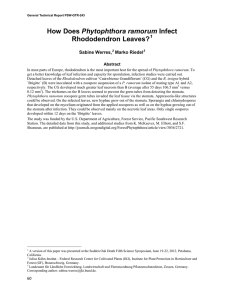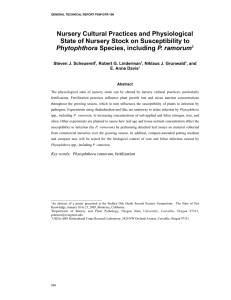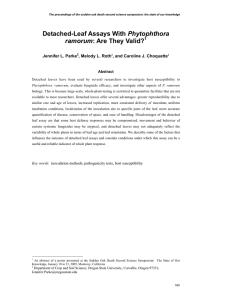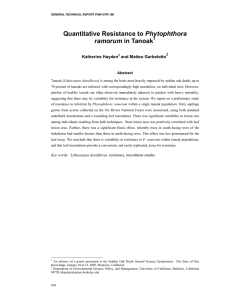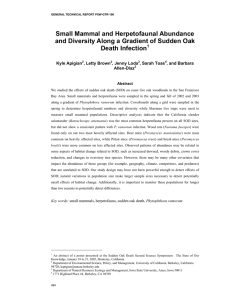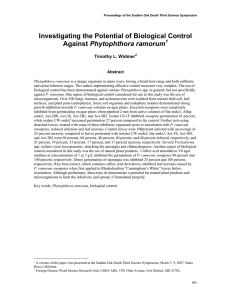Isolation and Characterization of Phytotoxins Phytophthora ramorum Daniel K. Manter
advertisement
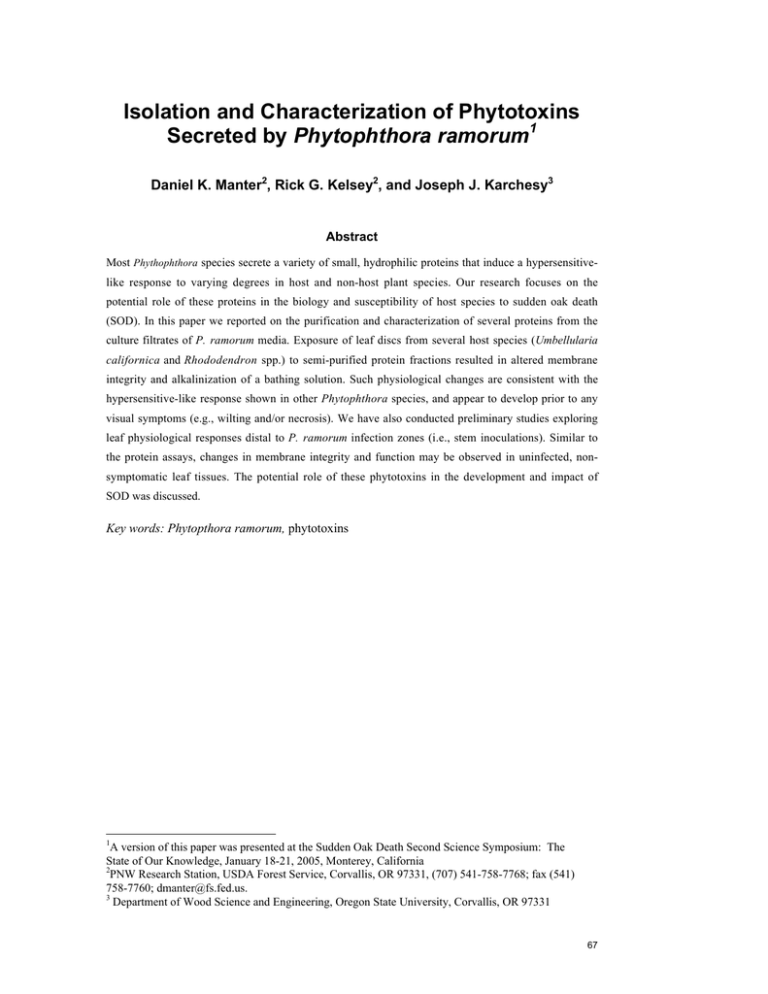
Isolation and Characterization of Phytotoxins Secreted by Phytophthora ramorum1 Daniel K. Manter2, Rick G. Kelsey2, and Joseph J. Karchesy3 Abstract Most Phythophthora species secrete a variety of small, hydrophilic proteins that induce a hypersensitivelike response to varying degrees in host and non-host plant species. Our research focuses on the potential role of these proteins in the biology and susceptibility of host species to sudden oak death (SOD). In this paper we reported on the purification and characterization of several proteins from the culture filtrates of P. ramorum media. Exposure of leaf discs from several host species (Umbellularia californica and Rhododendron spp.) to semi-purified protein fractions resulted in altered membrane integrity and alkalinization of a bathing solution. Such physiological changes are consistent with the hypersensitive-like response shown in other Phytophthora species, and appear to develop prior to any visual symptoms (e.g., wilting and/or necrosis). We have also conducted preliminary studies exploring leaf physiological responses distal to P. ramorum infection zones (i.e., stem inoculations). Similar to the protein assays, changes in membrane integrity and function may be observed in uninfected, nonsymptomatic leaf tissues. The potential role of these phytotoxins in the development and impact of SOD was discussed. Key words: Phytopthora ramorum, phytotoxins 1 A version of this paper was presented at the Sudden Oak Death Second Science Symposium: The State of Our Knowledge, January 18-21, 2005, Monterey, California 2 PNW Research Station, USDA Forest Service, Corvallis, OR 97331, (707) 541-758-7768; fax (541) 758-7760; dmanter@fs.fed.us. 3 Department of Wood Science and Engineering, Oregon State University, Corvallis, OR 97331 67

